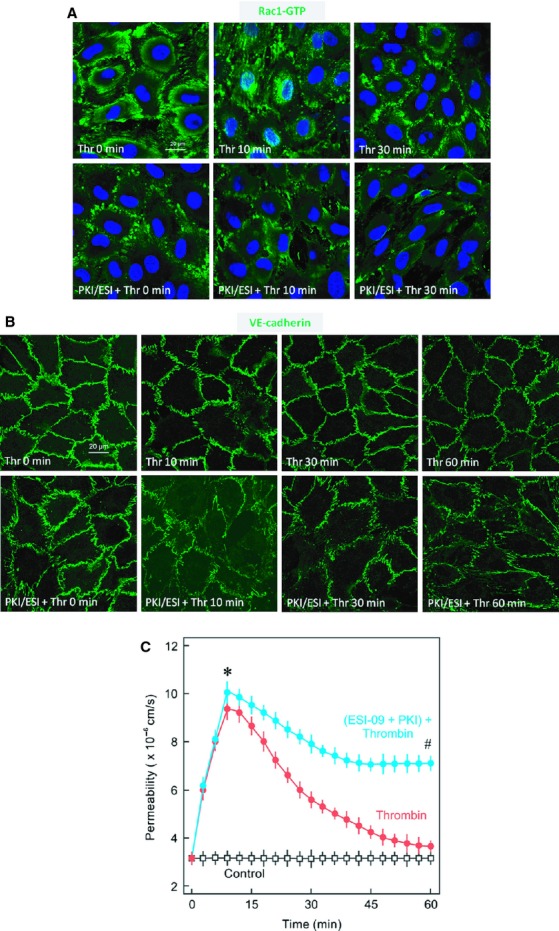Figure 6.

Role of cAMP signalling in Rac1 activation and barrier restoration. (A) Effect of inhibition of cAMP signalling on Rac1 activation. EC monolayers were treated with thrombin (Thr; 0.3 IU/mL) or vehicle (Thr 0 min) for indicated time periods in the absence or presence of PKA and Epac inhibitors (PKI; 10 μmol/L and ESI‐09; 3 μmol/L, respectively) and immunostained for active Rac1 (Rac1‐GTP) using a specific antibody directed against Rac1‐GTP. Nuclei were stained with DAPI. Representative images of Rac1‐GTP from three experiments of independent cell preparation. (B) Effect of inhibition of cAMP signalling on VE‐cadherin localisation. EC monolayers were treated with thrombin (Thr; 0.3 IU/mL) or vehicle (Thr 0 min) for indicated time periods in the absence or presence of PKA and Epac inhibitors (PKI; 10 μmol/L and ESI‐09; 3 μmol/L, respectively) and immunostained for VE‐cadherin using specific antibody directed against VE‐cadherin. Representative images of Rac1‐GTP from three experiments of independent cell preparation. (C) EC monolayers were exposed to thrombin (Thr; 0.3 IU/mL) in the absence or presence of PKA and Epac inhibitors (PKI; 10 μmol/L and ESI‐09; 3 μmol/L, respectively) or vehicle (control) as indicated and albumin flux (permeability) was measured. Mean ± SEM of three experiments of independent cell preparations; *P <0.05 versus control, #P <0.05 versus Thr alone.
